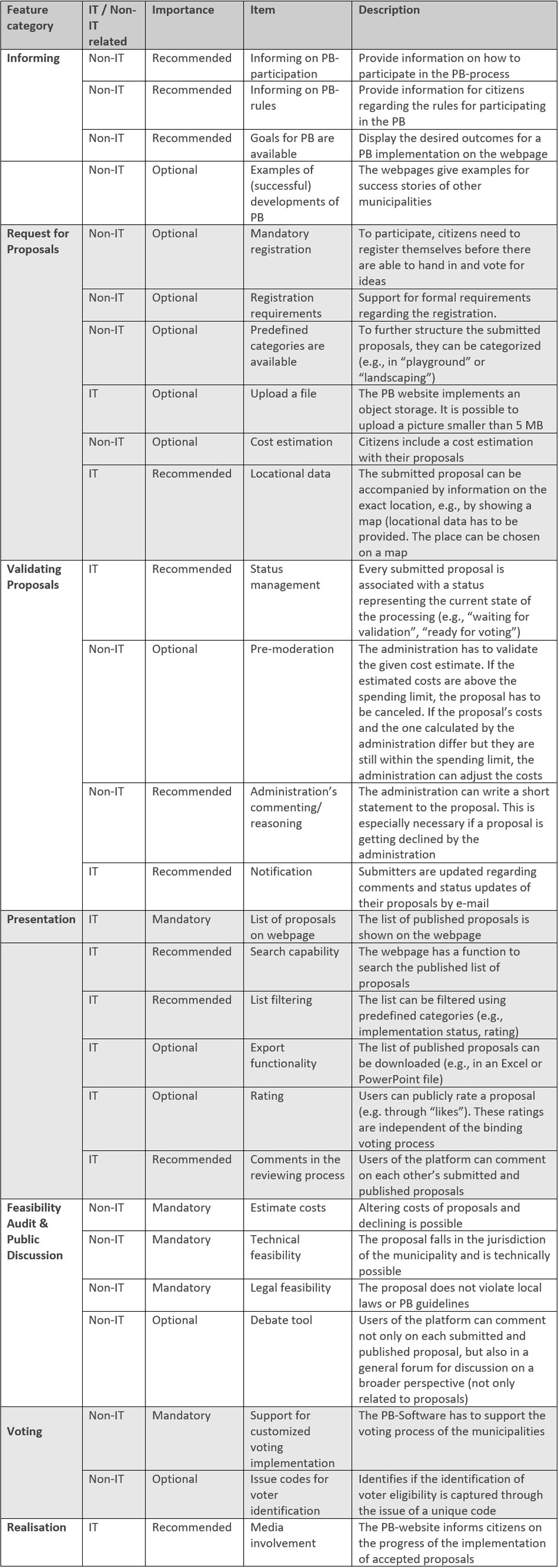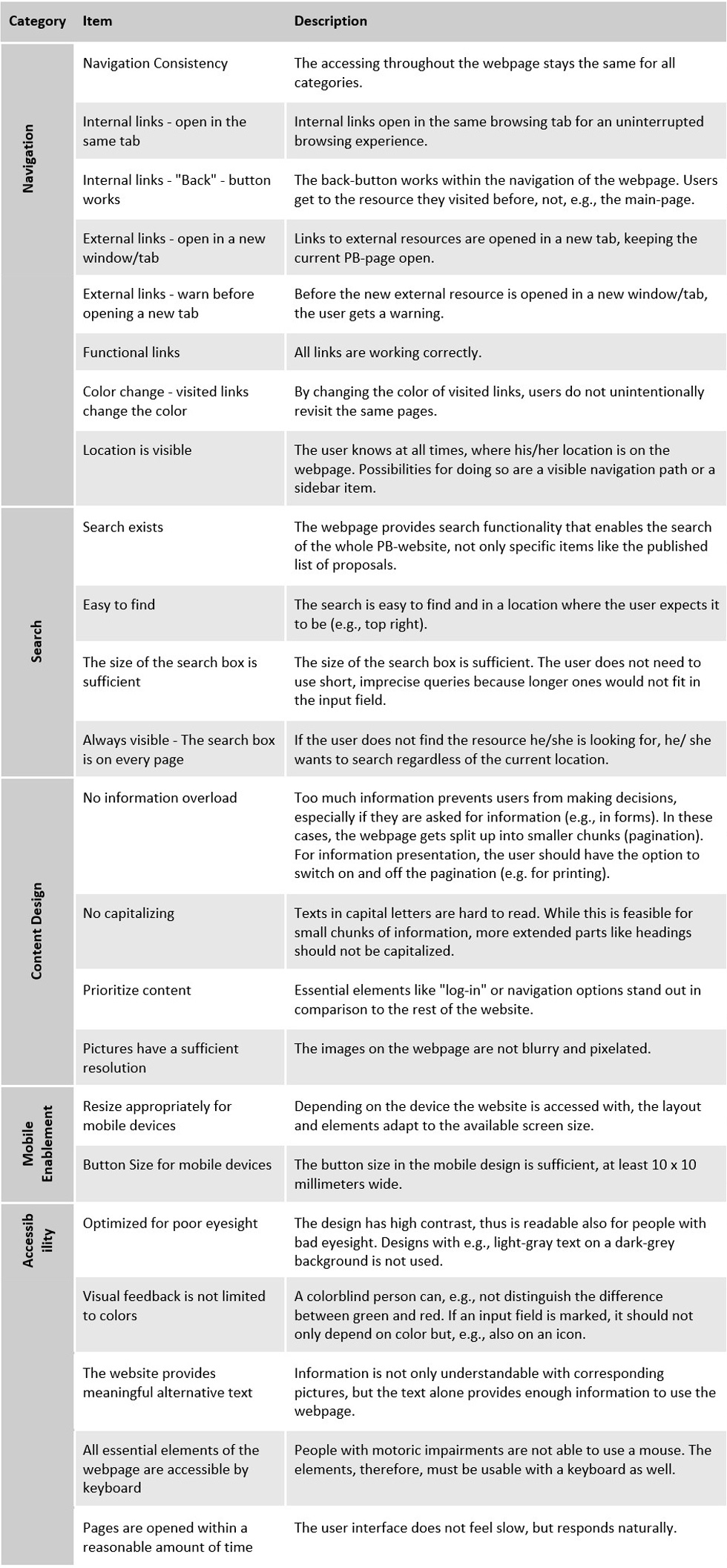.png)
Modern civic participation, incl. participatory budgeting (PB) would not be fully possible without the digital softwares and systems that allow to gather citizens, engage them in debates, assess proposed solutions, as well as involve in project design and evaluation. The digital environment is beneficial in engaging much more stakeholders than the physical debates and voting could, and skill-ful optimisation of participatory processes would ensure the democratic effectiveness of decisions made. Dozens of various-level governments practice partly-gamified interactions with citizens as service users, service providers and decision-makers. Moreover, organisations and neighborhoods are overtaking online decision-making practices to engage members and foster their collaboration and sense of reponsibility. Special online platforms are design from scratch for community engagement. Others purchase ready to use platforms and adjust them, facilitating from user-frendliness and instant customer support. It allows to suggest, that civic participation and PB have become accessible as never before.
In regard to civic participation and specifically PB, this section composes the EmPaci project team’s analysis of the PB solutions used across the Baltic Sea Region, as well as various articles and websites for own exploration on the topic of PB online platforms and digital engagement. Here you can learn about the various features of PB platforms, real case studies of PB implementation and get in touch with designers of relevant platforms. The external sources are used to complement the knowldge on PB, not limiting to experience of the Baltic Sea Region countries.
Overview of functionalities for PB IT implementations.
Evaluation of 50 different cities for the fulfillment level of 47 IT design aspects
Decision support to implement, compare or improve PB IT initiatives
Improve interactions with citizens with the customer journey tool
Options of a desirable eGovernment architecture
Analysis of 12 software solutions for PB
Best practices and lessons learned from the EmPaci partners
concerned with getting the citizens informed on the newly planned PB initiative
 Validating proposals
Validating proposals
perform first eligibility check (e.g., for hatespeech), ensures that the citizens are informed on the current progress of the publication of their ideas
 Presentations
Presentations
displays submitted proposals, informing the citizens on newly created ideas in their district and city-wide
 Feasibility Audit
Feasibility Audit
filters non-eligible elements, for instance, projects above the budget limit or those that are not in the local administration’s responsibility
 Public Discussion
Public Discussion
provides a forum that facilitates the exchange of the citizens’ opinions
 Voting
Voting
casting votes – depends on the political and juridical environment
 Realisation
Realisation
accompanies implementation efforts and keep the citizens informed on the progress that is made
We designed a feature repository for local governments to help select the right functionalities for municipal PB implementations. It comprises items that are mandatory to implement (e.g., voting mechanisms), recommended (e.g., search function within the list of proposals), or optional (e.g., export functionality for proposals). All features listed have some relation to IT - some of the features are almost solely driven through the IT department and do not imply a political decision; others impact the participatory budget’s overall orientation and require a strong mandate from the political decision-makers.

The listed features are the foundation for the data gathering of the Feature-Matrix (see below).
Usability describes how a system, product, or service can be used to achieve specific goals with effectiveness, efficiency, and satisfaction in a particular context of use. It is one of the factors that we can control easily, and it impacts not only the friendliness to use but also the perceived trustworthiness. That said, achieving high usability is far from a trivial task. The following table gives a starting point for assessing the usability of a PB system. It is not meant for trained technicians but the administration's decision-makers to quickly analyze their existing or future PB-efforts for essential usability criteria.
The Usability Study of Existing PB Web Pages assesses whether current PB initiatives follow usability and accessibility guidelines. In total, 50 different cities were evaluated for the fulfillment level of 47 distinct design aspects. Using the analysis, we identified the design elements considered standard and shortcomings of current approaches. Cities from different parts of the world were chosen to be learned from. The study results are briefly presented in this chapter and should be explored together with the comparative Feature-Matrix tool (see below).
For more details about each of the categories, follow the full document: Usability Study of Existing PB Web Pages (PDF/1,2 MB)
Download usability criteria – translated into Finnish, German, Latvian, Lithuanian, Polish and Russian.
concerned with a consistent browsing experience that follows best practices in website design
assesses whether the webpage has a functioning search capability
regards the readability and the structuring of the information on the webpage
examines the readiness to support access from smaller screen sizes of tablets and smartphones
assesses the optimisation for users with disabilities like poor eyesight, motoric impaired or other sensory impairments
The following table encompasses specific criteria for each of the feature categories.

The feature-matrix is an online tool that analyses 50 different cities for 47 process and usability criteria in total. The idea is to compare and learn from other PB initiatives all around the world. It is meant for cities that currently plan to implement or improve PB to be able to answer the following questions:
The tool serves as a repository and its analysis shall enable interested municipalities to:
1. Learn from other PB-initiatives around the world
2. Select capabilities they are interested in
3. Build a PB process based on the selected capabilities
4. Compare their implementations & planned processes with different PB-initiatives
Access the PB Feature-Matrix Tool – interactive instrument for analysis of PB
websites of 50 municipalities across the world with the use of 47 processes and usability criteria
framework:
PB Feature-Matrix-Tool
Download the manual and start the comparative analysis, depending on your interest in features:
Manual (PDF / 1,4 MB)
With regard to voluntary participation, we can draw parallels between citizen participation and corporate customer management. Corporations are actively managing customer relationships and carefully design all touchpoints to achieve high customer satisfaction and retention rate.
Historically, public administrations never experienced the same level of pressure to be customer- (or citizen-) friendly as corporations. There is just no alternative vendor for their kind of services. However, that changed with the rise of participatory government services. Now, the administration has an active interest in attracting citizens to participate voluntarily. Adapting established methods from touchpoint management in corporations can help to facilitate a high level of citizen satisfaction.

Exemplary, we depicted the process of a fictive persona “Gabi Schmitz” throughout the newly set up participatory budgeting initiative in Bützow. Along with the different online and offline interactions between Gabi and the administration, we show which elements are essential to consider and present success factors for implementing a PB.
Integrating or adding IT-supported PB applications into eGovernment systems is far from being a trivial task. Often, there already exists a variety of electronic-based governmental services; thus complex system landscapes of the municipalities have to be touched.
But what kind of eGovernment architecture is desirable, and what options do exists? We need a way to assist the implementation of PB into an existing eGovernment landscape. This output document helps to learn how to integrate such a system by proposing a PB reference architecture. It shall support administrations who plan to implement a PB by proposing a possible system architecture and integration scenarios. It can also assist administrations in restructuring their IT and making it ready not only for participatory budgeting but also for future challenges.

Information and communication technology (ICT) can support these PB initiatives. There are several software solutions available for implementing a PB. However, picking the right solution is far from an easy task as the solutions are as diverse as the needs and possible requirements of administrations. This project output scrutinizes different solutions in aiming to provide support for aspiring municipalities in selecting the right PB software.
It sheds light on the differences between the available software solutions. First, we shortly describe the applications and then lays out the tested capabilities of the software. Afterward, we show the fulfillment level of these capabilities and presents an excel tool for making individual, informed decisions. Further the case example of two Finnish municipalities is presented, outlining their software decisions and why the given software just fits their needs.
Software evaluation tool (5 MB) for selecting the right PB tools
Output document describing how to use the evaluation tool, and best practices for selecting PB software (PDF / 900 kB)

There are no golden rules in participatory budgeting that apply to every country, municipality, or PB initiative. There are significant cultural and jurisdictional differences between, for example, a German and a Russian PB. That being said, we still can learn a great deal from each other, identify common challenges and observe how other countries tackle their problems.
The following output document is focused on gathering best practices and lessons learned from the project partners. All of them have at least one year experience in managing an IT-supported PB. We collected their acquired knowledge through a joint workshop, allowing future municipalities to build on the EmPaci partners' experience regarding a technical implementation of a PB.

Benefits of Online Community Engagement: building trust and engaging underrepresented groups
CitizenLab – a platform for tackling COVID-related challenges and mobilizing citizens
Guides and resources on digital participation from CitizenLab
Case studies on PB implementation from CitizenLab
Explore Omastadi, PB platform of Helsinki
...